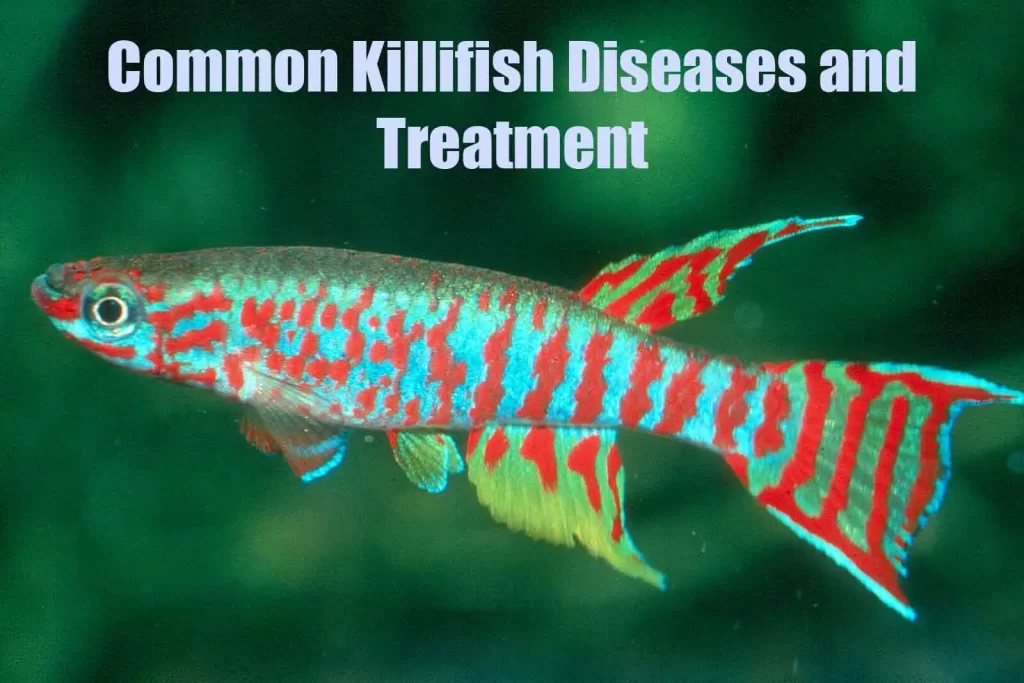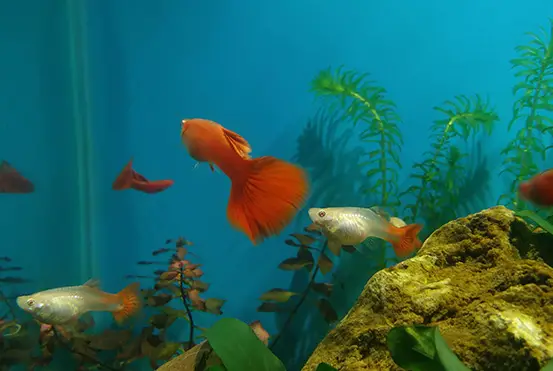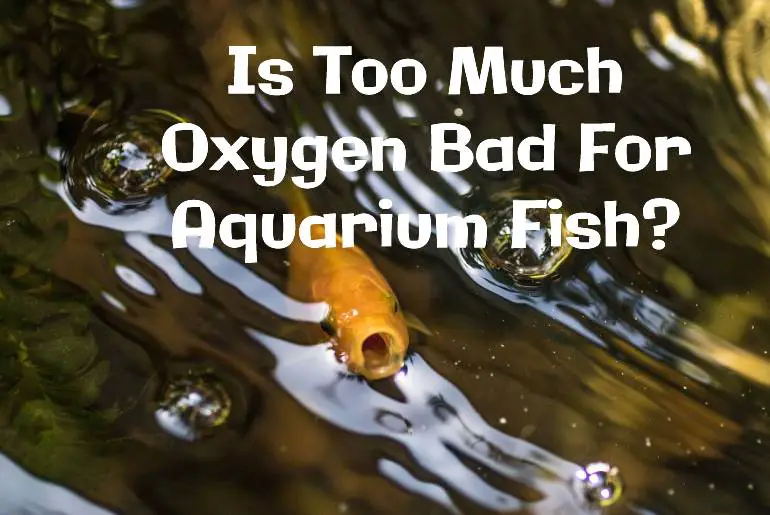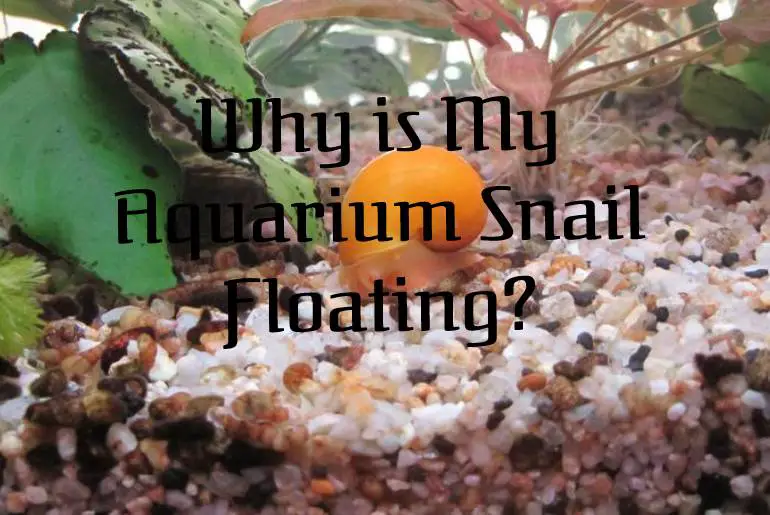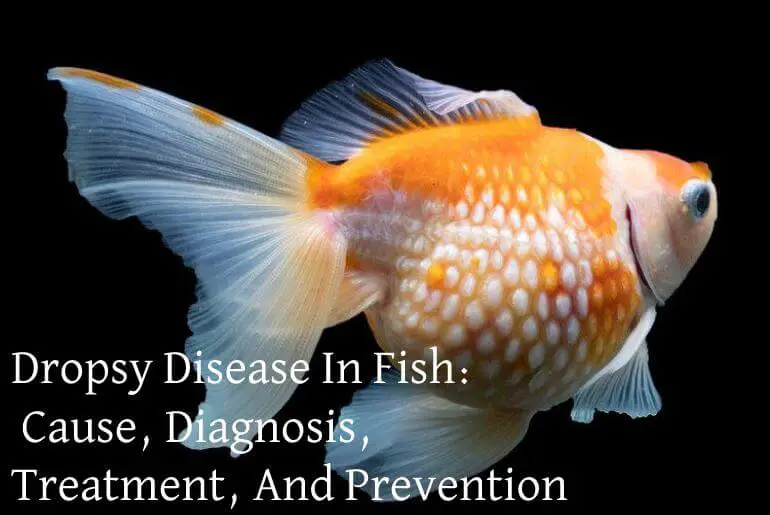Killifish is known for its bright and striking vibrant color. The fish is also called as Cyprinodontifornes and is one of the most popular fish among all aquarium fish keepers. The males and females can be identified by the brightness of the color in their bodies. As in most species, the males have brighter colors than females. Like most aquarium fish, killifish are also prone to several diseases. Various factors can cause disease in the fish. Some of the common reasons why killifish gets affected by the disease are poor water quality, the introduction of sick fish and contaminated ornaments to the tank.
Ick, fin and tail rot, columnaris, dropsy, velvet, fish lice are some of the common diseases the killifish gets in an aquarium. Water changing (about 10% of the water every week), maintaining the right pH value and water condition, maintaining the water parameters are typical treatment methods to the disease. To prevent the diseases, you must provide good nutrition and quarantine the fish that has a certain disease.
Prevention is Better Than Cure
- Make sure you have a good tank.
- Don’t overfeed the fish.
- Make sure the water quality is right.
- Give only the food from the trusted fish supplier.
Killifish Diseases And Treatments (Preventive Measures)
Even though you try your best that the fish are healthy, they tend to get some sorts of diseases now and then. The disease can be caused by parasites, bacteria, or just the fish tank condition. It’s always better to know what type of disease your fish can get and how. Here, I present to you the list of the different diseases the killifish might get with treatment and prevention.
Fin and Tail Rot
As the name suggests, this disease is related to the crumbling of fins and tails in the fish. The tail turns opaque, and there is the presence of an uneven white line on the edges of the tail and fin. Usually, this disease gets only noticed in its later stages.
Symptoms:
- The tail and fins slowly start to crumble.
- Fish starts to look discolored.
- The fish rubs its body in the edge of the tank and in the ornaments of the tank.
- Fin or tail rot causes fish to stress out.
- The fish seems to have lost the appetite.
Causes:
- Bacteria such as Vibrio, Pseudomonas, and Aeromonas causes fin and rot in the fish. The infected, when it comes in contact with other healthy fish, may affect them as well.
- Overcrowding of fish in the tank leads to biting each other’s tail and fin hence causing fin and tail rot.
- The cold temperature of the aquarium and poor water quality.
Treatment:
- Find what’s troubling the fish and remove it.
- Isolate the fish.
- Use certain medications like Melafix.
- Check water parameters and pH values.
- Clean the tank and remove wastage from the aquarium.
Columnaris
Columnaris is caused by a bacterium that has a columnar shape. Therefore, it is called Columanris. It is a very infectious disease and spreads with aquarium related items.
Symptoms:
- Signs of ulcers appear on the body of the fish.
- White cloudy patches on gills.
- Change in gill color.
- Fish shows signs of shortness of breath.
Causes:
- Poor and insufficient diet.
- High pH value of water.
- Less water care.
- Over-crowding of fish.
Treatment:
- A good antibiotic combination like nitrofurazone and kanamycin.
- Lowering your aquarium temperature since columnaris is more common in high temperatures.
- A medicated bath to the infected fish.
Hemorrhagic Septicemia
This disease is also called Red Pest due to the fact that some peculiar red lines appear on the fish body. It is caused by the bacteria of the name ‘Hemorrhagic Septicemia.’ Hemorrhagic Septicemia is an internal disease. The virus can enter the circulatory system of the fish, and it can affect the tissue, blood vessels, and the heart.
Symptoms:
- The appearance of red lines on the body.
- The fish tend to breathe fast.
- Swollen eyes of the fish.
- The fish shows an irregular swimming pattern.
- Fish tends to open mouth more often.
Causes:
- A large number of organic leftovers.
- High nitrate level in the water.
Treatment:
- There is no known treatment of the Hemorrhagic Septicemia till date. However, you can try treating other infections with Lifeguard can help.
- Cleaning the tank and changing the water from time to time.
- Adding antibiotic to the food
Dropsy
Dropsy is a condition in which the fish has a large inflamed stomach. The condition is also called bloat. Dropsy condition generally occurs to fish that have a lower immune system, and it is stressed.
Symptoms:
- Enlargement of bellies.
- Gills become pale.
- Loss of appetite in the fish.
- The fish finds it difficult to swim. So, swims on the surface.
- Boils on the body.
Causes:
- Dropsy is caused by bacteria named Aeromonas bacteria.
- Substantial loss in water temperature.
- Stress in the fish. The stress is generally caused because of transportation and aggressive teammates.
- A large quantity of Nitrate and ammonia in water.
- Some other diseases can also trigger dropsy.
Treatment:
- Move the infected fish to a separate tank and add a small quantity of Epsom salt.
- Make sure you feed the fish high-quality fish food.
- Provide antibiotics to the fish.
Pop Eye
Pop Eye is also called exophthalmia, which is a condition in your fish where the eyes of the fish seem to stick out from its socket. This disease may affect one or both eyes. The eyes may be swollen as well.
Symptoms:
- One or both swollen eyes.
- Cloudy or white eyes.
Causes:
- Infection due to bacteria, viruses, fungi, and parasites.
- Accumulation of water bubbles in the fish eyes.
- If only one eye is affected, it can be because of a fight with another fish in the tank.
Treatment:
- Isolate the affected fish and provide Epsom salt to draw water out.
- Make sure you change the water regularly.
- Make correct water parameters.
Eye Cloud/ Cloudy Eyes
Cloudy eyes, as the name suggests, is the condition in which the fish eyes become cloudy. The eyes become white, and the fish can lose its sight as well. It can occur in one or both of the eyes. Eye cloud can also mean there is a problem in the aquarium that needs to solved quickly.
Symptoms:
- The white or cloudy eyes.
- The fish starts losing vision.
Causes:
- Low quality of water.
- Low immunity of the fish.
- A large quantity of ammonia and Nitrate in the water.
- A sudden change in water temperature.
Treatment:
- Clean the water tank.
- Check the level of ammonia and nitrates in the water level.
- Make regular water change to the aquarium.
- Add a little salt to the water.
Mouth Fungus
The mouth fungus is also called cottonmouth or cotton wool. It is one of the common diseases a fish can get. It is caused by bacteria called Flexibacter Columnaris or Flavobacterium Columnare.
Symptoms:
- Cotton wool-like white threads appear in the mouth and head area.
- The fish may feel irritated.
Causes:
- Certain injury-causing wounds from where bacteria can enter.
- Low Immunity levels contributed by low nutrition.
- Poor water condition.
Treatments:
- You should use an antibiotic to treat this disease. Talk to your veterinarian to get a tetracyclin.
- Normal table salt can be used to prevent further spread of the disease.
- Give food of enough nutrition value to the fish.
Furunculosis
Furunculosis is a dangerous and contagious disease that can affect the fish. It affects fish regardless of the age factor. It can be transmitted to other fish as well.
Symptoms:
- The sudden death of the fish can occur
- Fish seems to be tired while swimming
- Loss of appetite
- The fish tends to jump a lot from the water
- Difficulty in breathing.
Causes:
- Poor water quality.
- Temperature fluctuations
- Stress in the fish.
- Treatments:
- Make use of certain medicines or vaccination.
- Iodine is used to clean the fertilized eggs so that it is not transmitted to other fish.
Fish Fungus
The fungal infection is very common in the fish. It is caused by fungi like Saprolegnia and Achla. The fungal infection is caused in various body parts where you can spot a ball of white wool-like structure. Skin, gills, fins are affected because of fish fungus.
Symptoms:
- White wool-like structure in various body parts.
- The fish swims very less.
- Loss of appetite in the fish.
- The fish will show symptoms of tiredness and idleness.
Causes:
- Low immunity levels in the fish.
- Low water temperature.
- Poor water quality
- A wound on the fish which is caused by fights among fish.
Treatment:
- Increase the water temperature.
- Change the water regularly.
- Quarantine the fish and bath the fish in a salt solution.
- Treat the fungus that has caused the disease in the first place.
- Give the fish high nutritional value food.
Velvet
Velvet is also known as the Rust or Gold Dust Disease. Killifish are very prone to get velvet. It affects the gill and skin area of your fish. The organism causing Velvet is Oödinium pillularis and Oödinium limneticum. If proper care is not given, it can even kill the fish.
Symptoms:
- Color similar to rust can be seen in the skin.
- The fish breathe heavily.
- Loss of appetite is observed in the fish.
- The fish feels irritated.
- The fish rubs its body against the aquarium or other objects.
Causes:
- Caused when Oödinium pillularis and Oödinium limneticum get attached to the fish.
- Poor quality water.
- Changes in the water temperature.
- Stress in the fish
Treatment:
- Choose a darker setting of the aquarium.
- Add salt to the aquarium water.
- Use copper sulfate to treat the fish.
- Atabrine can also be used for treatment.
- Make higher temperature adjustment.
Ick
Ick is also referred commonly referred to as white spot disease. In this disease, your fish gets small white spots in the body. Ick is caused by Ichthyophthirius multifiliis. This parasite gets attached to fish skin and then causes white spots.
Symptoms:
- Small white spots in the fish body.
- The fish rubs against the tank or against hard ornaments.
- Loss of appetite.
- Hard attempt to breathe.
Causes:
- Low immunity levels.
- Improper diet
- Water temperature fluctuation
- Quality of water
Treatment:
- Raise the temperature of water to 80F and wait four days.
- Move the fish to a separate tank and then clean the tank.
- Formalin or malachite green, or a combination of both can be used to control the parasite.
Anchor Worms
Anchor worms are a disease caused by a parasite called Lernaea spp. The male and female parasite mate and then the female parasite gets attached to fish skin. This parasite can be seen even with our naked eyes. The attached parasite gives a similar look to the worms. It is amongst the hardest disease to treat.
Symptoms:
- The worms can be seen in the body of the fish.
- The fish will have red and swollen skin.
- The fish rubs against the tank surface to get rid of worms.
Causes:
- New fish being added to aquarium having anchor worms.
- The parasite getting attached to the fish body.
- Failing to quarantine the aquatic plants.
Treatment:
- Consult the vet for sedation. The sedation is a process where the fish feels less stressful, and the vet can get the worm out without any harm to the fish.
- Treat your water with UV light for remaining worms in the water.
- Organophosphates or diflubenzuron and antibiotics can be used.
- Provide high-quality water to the tank.
Fish lice
Fish lice is a disease that is similar to anchor worms. The fish lice look like a dot of algae floating on the fish body. The lice have a long needle that they take out while they are to drink the fish blood. Fish lice, in the long run, can also cause other diseases. It is important to cure the fish lice quickly; else, your fish will not survive for long.
Symptoms:
- Lice will be moving around and on the fish body. The lice look like a dot of algae.
- The fish feels itchy and irritated.
- The fish swims in an irregular pattern.
Causes:
- Failing to quarantine new fish.
- Failing to quarantine new plants.
Treatment:
- Use tweezers to take out the lice.
- Use medication such as Dimilin to treat the fish lice and eggs in the aquarium.
Hole in the Head
Hole in the Head is also referred to as Hexamitiasis and is caused by a parasite of genus Hexamita. It starts with small wounds in the head. The wounds get bigger and then form a hole like structure in the fish.
Symptoms:
- Presence of lesions on the head.
- White, stringy feces
- Loss of appetite.
- The fish starts losing weight abnormally.
Causes:
- Low Nutrition food
- High Nitrate Level in the water.
- High-stress level in the fish.
Treatment:
- Remove all the activated carbon from the aquarium.
- Make a large percentage of water change.
- Move the fish to a new environment.
- Slowly increase the temperature.
Swim Bladder Disorder
Swim Bladder Disorder is not a disease but a collection of diseases that affects the swim bladder in your fish. It is a condition where the swim bladder of your fish does not work properly, and therefore, the fish can lose control over their swim.
Symptoms:
- The fish will lose control of its swim. It will either sink or float in the tank.
- Loss of appetite.
- Swollen stomach and curved back.
Causes:
- Parasite and bacterial infection.
- Low water temperature.
- Failure of other internal belly organs like kidneys or liver.
Treatment:
- Increase the temperature of your aquarium.
- If swim bladder is caused because of the large swollen stomach, then don’t feed the fish until four days.
- Maintain cleanliness of the water.
- Add a little salt to the aquarium.
- Hand-feed the fish if necessary.
Tumors
Like humans, killifish are also not immured to tumors. The fish can have lumps on various body parts. The tumors can spread fast to other parts as well.
Symptoms:
- You will see unusual lumps in fish body. The tumors can be white, black, or red.
- The fish becomes sluggish.
- Loss of appetite.
Causes:
- Most cases of tumors are genetic.
- Virus infection
- Poor water condition.
Treatment:
- Most of the tumors are not treatable.
- However, it is best to consult a vet to get the tumors removed.
Gill Parasites
AS the name suggests, gill parasites are those parasites that live in fish gills.The parasites then cause various other infections to the fish. Dactylogyrus is a common parasite that causes gill parasite.
Symptoms:
- Difficulty in breathing.
- Inflamed gills.
- The fish stats are becoming pale.
- The fish will rub its gills against the tank to remove the parasite.
Causes:
- Poor water quality
- Stress in the fish.
- Injury in the gills area because of fights among the fish, causing wounds from where the parasite can enter the gills.
Treatment:
- Isolation of the infected fish.
- Use medicines like medicaformalin and praziquante to treat the parasite in the fish.
- Clean the tank.
- Provide high-quality water.
Internal Parasite
An internal parasite is a single-celled organism that lives inside the fish body, usually the intestine. The parasite eats all the food, and then the fish is left with no nutrients. This disease is very common, and if left untreated, can even kill the fish.
Symptoms:
- The fish acts abnormal
- Light, white, clear faces
- Loss of weight and sunken stomach.
Causes:
- Low immunity levels.
- Poor water quality.
- Lack of removal of fish waste and leftovers.
Treatment:
- In a cup of water, add fish food and little pieces of garlic. Let it sit for 5 minutes and feed the fish. This increases immunity and kills the internal parasite.
- Use medicine if you want a speedy recovery.
- Make a 50% chance of water.
Ammonia Poisoning
Ammonia Poisoning is a common disease that your fish can get. The poisoning happens when there is a high amount of ammonia level. Tap water and decay of organic matter in the tank mostly cause Ammonia poisoning in the tank. Ammonia poisoning is tough to monitor as an increasing amount of ammonia cannot be seen.
Symptoms:
- The fish will have difficulty in breathing.
- The gills of fish seem like bleeding.
- Loss of appetite
- The fish becomes inactive and slow.
- Mostly, the fish will stay at the bottom of the tank.
Causes:
- Use of chloramine to treat tap water.
- The decay of organic compounds and leftovers of fish foods.
- Lack of cleanliness of the fish tank.
Treatment:
- Lower the pH value of the aquarium
- Make regular water changes.
- Avoid feeding for some days.
Slime Disease
Slime Disease is a disease caused by a parasite. The fish affected by this disease produces an excessive amount of mucus. The slime disease can also cause the fish to catch some other diseases.
Symptoms:
- Excessive production of mucus around the gills.
- Difficulty in breathing.
- The fish will scratch its body against the hard surface.
- The fish seems lazy.
- Loss of appetite.
Causes:
- Stress in fish.
- Exposure to nitrogenous waste.
- Poor environmental conditions.
Treatment:
- Use medication like formalin, copper sulfate, and potassium permanganate.
- Remove the carbon from the aquarium.
- Raise the water temperature to 86 F.
- Add a higher dose of salt in the water.
Disease Prevention
As we have seen, the fish can get various diseases, so it is always best to have a list of preventive methods to prevent further diseases. Some of the preventive measures are:
- Do not overcrowd your aquarium.
- Make sure you don’t have an aggressive kind of fish. The aggressive fish tend to fight and nib another fish.
- Do not try to overfeed the fish. The leftovers tend to form bacteria.
- Make regular water change and maintain the water quality.
- Do not fluctuate the water too much and too soon.
Conclusion
To sum up, the killifish is one of the most colorful and popular fish in the aquarium. However, it is also prone to several diseases. It is always important to treat the infected fish, but its always better to take preventive measures so that the fish is not infected.
Author: Sandesh Kunwar

